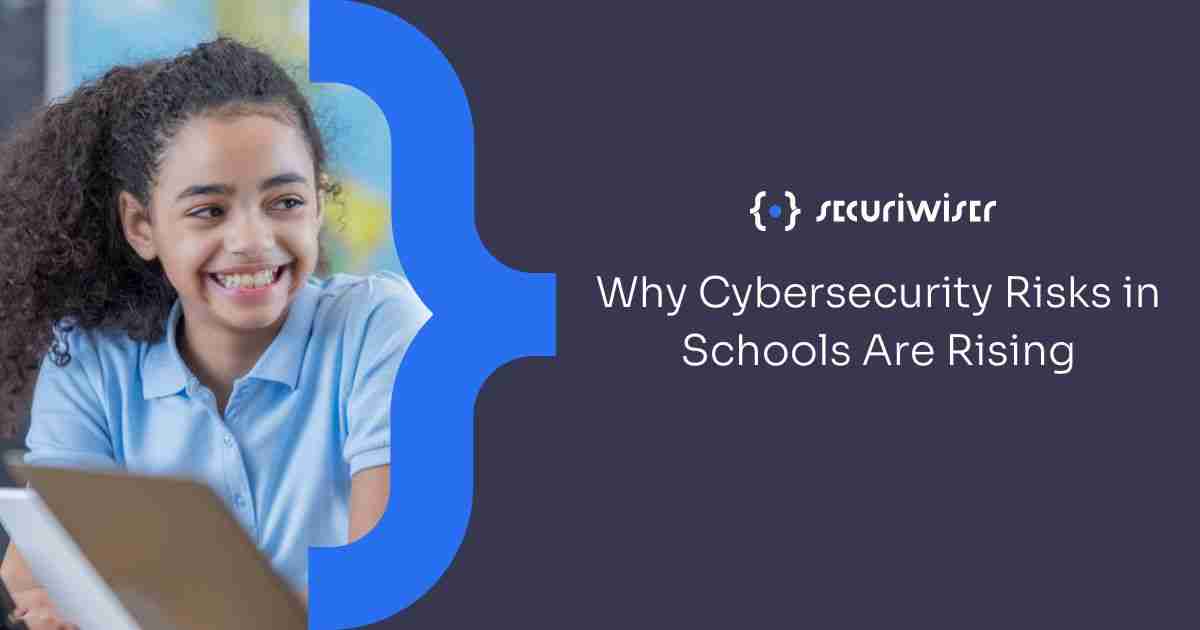Why Cybersecurity Risks in Schools Are Rising
Blog / Why Cybersecurity Risks in Schools Are Rising
5 MIN READ


Cybersecurity risks in schools are on the rise, and it's important for educators and administrators to take notice. With the increasing use of technology in the classroom, schools are becoming more vulnerable to cyberattacks. These attacks can result in the loss of sensitive information, financial losses, and even the disruption of the educational process.
How are schools getting breached
Schools are vulnerable to a wide range of cyber threats, including hacking, phishing, malware, and other malicious activities. Here are some of the ways that schools are getting breached:
1. Technology in the classroom
One of the main reasons for the rise in cybersecurity risks in schools is the increased use of technology in the classroom. With more students and teachers relying on computers, tablets, and other devices, there are more opportunities for cybercriminals to gain access to sensitive information. Additionally, many schools are now using online platforms for assignments, tests, and other activities, which can also be vulnerable to attacks.
2. Remote Learning
Since the COVID-19 pandemic, remote learning has become a norm. This has led to an increase in the number of students and staff accessing the school's network from remote locations, increasing the attack surface for hackers.
3. Unsecured personal devices
With many students and staff using personal devices to access school resources, it's important to ensure that these devices are secured with up-to-date software and security features. If a personal device is compromised, it can provide a hacker with access to a school's network and data.
4. Lack of cybersecurity measures
Another reason for the rise in cybersecurity risks in schools is the lack of proper security measures in place. Many schools still have outdated security systems and protocols that are not equipped to handle the latest cyber threats. This can leave schools vulnerable to attacks and make it difficult for them to recover from a breach.
5. Lack of cybersecurity training
Many schools are not adequately trained on cybersecurity best practices and may not have adequate security policies in place. They may also not be monitoring their networks and systems or assessing their security measures regularly.
6. Weak or stolen passwords
Another common way that schools are getting breached is through weak or stolen passwords. Many staff and students use the same password for multiple accounts, making it easy for hackers to gain access to sensitive information if they are able to crack one password. Additionally, if a staff or student's password is stolen through a phishing scam or another means, a hacker may be able to use it to access other accounts.
7. Outdated software
Schools that don't keep their software and systems updated are at a higher risk of getting breached. Hackers can exploit vulnerabilities in outdated software to gain access to a school's network and steal sensitive data.
8. Phishing scams
One of the most common ways that schools are getting breached is through phishing scams. These scams involve sending emails or messages to staff and students that appear to be from a legitimate source, such as a bank or a government agency. These emails or messages often contain a link or an attachment that, when clicked, can install malware on the recipient's device or steal login credentials.
Why Is Cybersecurity So Important for schools?
With more and more schools relying on online systems for everything from student information and records to communication and online learning, the need for strong cybersecurity measures is more vital than ever. Below are some reasons why schools need to take cybersecurity serious:
1. The need to protect their data
Schools hold sensitive personal information about students and staff, such as names, addresses, Social Security numbers, and other sensitive data. Without proper cybersecurity measures in place, this information could fall into the wrong hands, leading to identity theft or other negative consequences.
2. Avoiding disruptions to the learning process
In addition to protecting personal information, cybersecurity is also crucial for protecting the integrity of the educational process. Cyber attacks on schools can disrupt the learning environment, causing delays or even cancelling classes. They can also lead to the loss of important educational materials and resources, such as assignments, projects, and test scores.
3. Avoiding costly repairs
Another reason that cybersecurity is so important for schools is that cyber attacks can be incredibly costly. Schools are often on a tight budget, and a cyber attack can lead to expensive repairs and lost funds that could be better used for educational resources and programs.
4. Adhering to regulations
In the UK, schools are subject to strict regulations such as the General Data Protection Regulation (GDPR) which requires them to protect personal data including that of students, staff, and parents. This includes information such as names, addresses, and contact details, as well as sensitive information such as medical records. Failure to comply with these regulations can result in hefty fines, which can be financially devastating for schools.
What Are Some Ways Schools Can Improve Cybersecurity?
It is essential for schools to take steps to protect themselves from cyber threats and implement a comprehensive security policy. Here are some ways that schools can improve their cybersecurity:
Implement security policies and procedures: Schools should have clearly defined policies and procedures in place to protect their networks and data. This includes guidelines for password management, remote access, and the use of personal devices on the school network.
Strong passwords: Encouraging staff and students to use strong, unique passwords for all accounts is a simple but effective way to improve cybersecurity. Passwords should be at least eight characters long and include a mix of letters, numbers, and special characters.
Keep software and systems updated: Keeping software and systems updated is crucial for preventing cyber attacks. This includes updating operating systems, web browsers, and other software on a regular basis to address any security vulnerabilities.
Provide cybersecurity training for staff and students: It's essential that staff and students understand the risks associated with technology use and know how to protect themselves and the school's network. This can include training on topics such as phishing, social engineering, and safe browsing practices.
Use security software and hardware: Schools should have firewalls, antivirus software, and intrusion detection systems in place to protect their networks from cyber attacks. Additionally, schools should regularly update their software and hardware to ensure they are protected from the latest threats.
Backup critical data: Regularly backup important data and files, such as student records and financial information, to protect against data loss in the event of a cyber attack or other disaster. This can include on-premises backup solutions as well as cloud-based backup services.
Monitor network activity: Schools should monitor their network activity to detect any suspicious activity or potential threats. This can include monitoring for unauthorised access attempts, malware infections, and other security breaches.
Conclusion
In conclusion, cybersecurity risks in schools are on the rise as technology becomes an increasingly integral part of the educational experience. With the growing use of digital devices, online learning platforms, and the internet, schools are exposed to a wide range of cyber threats. These can include hacking, phishing, malware, and other malicious activities that can compromise student and staff data, disrupt learning, and damage the school's reputation. However, by taking proactive steps to protect their networks and data, schools can ensure that they can continue to provide a safe and secure learning environment for students and staff.
Protect your organisation's most valuable data by signing up for a free Securwiser account. Click here to create your account.
Next Article
What is Vendor Risk Management?How secure is
your business?
Blog categories
How secure is
your business?